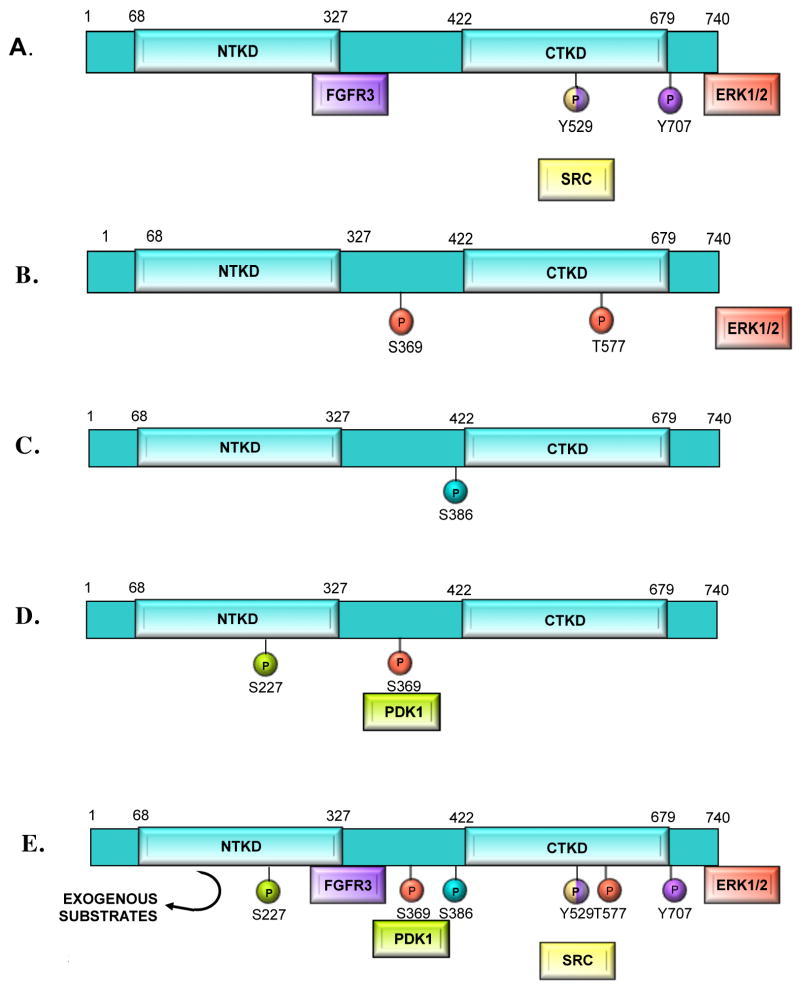Figure 2. RSK activation.
The RSK isoforms are activated by the same general mechanism. That mechanism is summarized in this figure using amino acid numbering corresponding to human RSK2. Color coding identifies the kinase with its associated phosphorylation. A) Inactive ERK1/2 binds to the extreme C-terminus of inactive RSK. In some cell types inactive RSK is also phosphorylated at Tyr-707 and Y529 by FGFR3 or SRC. B) In response to mitogen, ERK1/2 phosphorylates RSK on Ser-369 and Thr-577, activating the CTKD. After phosphorylating its target sites, ERK1/2 disassociates. C) The active CTKD autophosphorylates Ser-386. D) PDK1 is recruited to phospho-Ser-369 and then phosphorylates Ser-227 in the NTKD, completing activation of the NTKD. E) Summary of RSK activation steps leading to NTKD-mediated phosphorylation of exogenous substrates.

